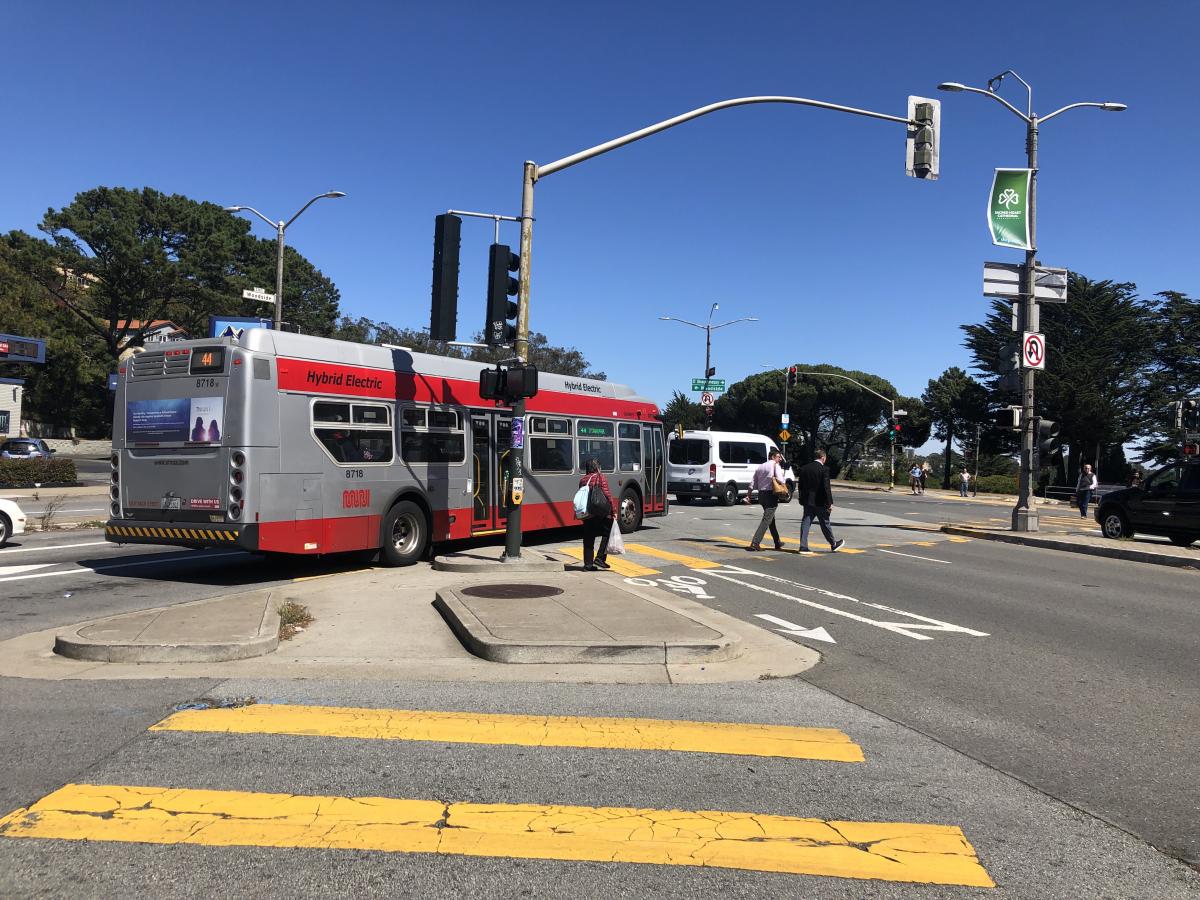
^ 44 O’Shaughnessy driving through the hot spot intersection near Woodside Avenue/Portola Drive to O’Shaughnessy Boulevard/Portola Drive.
The SFMTA is taking a creative approach to reducing delay for Muni customers: We are improving the slowest spots in the Muni system, whether they are on our highest ridership routes or on less ridden but essential connector routes. The Transit Delay Hot Spots program targets simple improvements where they can have the greatest impact, using data to identify hot spots where Muni encounters the greatest delays. Typically, the Muni Forward program focuses on longer corridor improvements that benefit our most heavily used Muni routes, such as the 5 Fulton, 14 Mission and 38 Geary. In addition to improving service reliability on our highest-ridership routes, we also target solutions for “hot spots” where customers experience the greatest delays, regardless of how many people ride the line.
Each round of hot spots identifies the ten slowest segments in the Muni system, looking at travel time between adjacent stops in the peak hours. On these ten segments, Muni buses slow to less than four miles per hour during the busiest times of day. By making quick and relatively minor adjustments to these short segments, we can help buses move more quickly, improving travel time and reliability on an entire route. Following implementation, the SFMTA monitors travel times and community feedback and may modify the changes if needed. While the hot spot improvements are targeted, the transit time improvements benefit customers on the entire route by improving reliability.
Process:
- Step 1: Analyze travel times to identify next round of hot spots
- Step 2: Develop proposals and gather community feedback
- Step 3: Implement hot spot improvements
- Step 4: Evaluate implemented hot spots and share results